Today’s Current Affairs: 27th August 2025 for UPSC IAS exams, State PSC exams, SSC CGL, State SSC, RRB, Railways, Banking Exam & IBPS, etc
Table of Contents
Exercise Aarogya Setu:
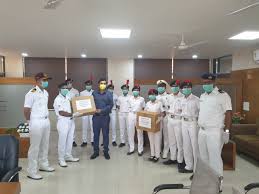
The Indian Army recently organised the maiden Exercise Aarogya Setu at Rupai, Doomdooma in the Tinsukia district of Assam.
- Exercise Aarogya Setu was organised by the Indian Army at Rupai, Doomdooma, in the Tinsukia district of Assam.
- A first of its kind, it marked a civil-military medical fusion exercise in the region.
- The event aimed at strengthening cooperation between the Army Medical Corps, reputed senior civil doctors from leading hospitals, and PHCs of Tinsukia and the Northern Frontier Railway Hospital,
- The focus of the exercise was on how Army and Civil medical fraternities can work together during disasters and war-like situations.
- A special highlight was the participation of a doctor from the Northern Frontier Railway Hospital, who introduced the concept of train ambulances —a life-saving facility.
- The presentation drew great interest and sparked discussions on innovative methods of large-scale casualty evacuation.
- Doctors from both sides discussed how civil institutions can extend crucial support to Army medical authorities.
Controversial transfer of archaeologist K. Amarnath Ramakrishna:
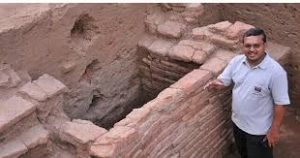
The Archaeological Survey of India (ASI) has once again drawn public scrutiny following the controversial transfer of archaeologist K. Amarnath Ramakrishna.
- ASI, under the Ministry of Culture, Government of India, is a premier organisation for archaeological research and protection of the tangible heritage of the nation.
- It was established in 1861 by Sir Alexander Cunningham, with its headquarters in New Delhi.
- After independence, it was established as a statutory body under the Ancient Monuments and Archaeological Sites and Remains Act, 1958 (AMASR Act).
- The prime concern of ASI is the maintenance of ancient monuments, archaeological sites, and remains of national importance.
- Besides, it regulates all archaeological activities in the country as per the provisions of the AMASR Act.
- It also regulates the Antiquities and Art Treasure Act, 1972.
- The Central Government has declared 3679 monuments and sites as of national importance, and ASI shoulders the responsibility of protecting and maintaining them.
- The organization has a large workforce of trained archaeologists, conservators, epigraphists, architects, and scientists for conducting archaeological research projects through its Circles, Museums, Excavation Branches, Prehistory Branch, Epigraphy Branches, Science Branch,
- Horticulture Branch, Building Survey Project, Temple Survey Projects, and Underwater Archaeology Wing.
Criminal Proceedings Initiated Against Psephologist Sanjay Kumar:

The Supreme Court recently stayed criminal proceedings initiated against psephologist Sanjay Kumar for a social media post concerning an erroneous analysis of the 2024 Maharashtra Assembly election.
- Psephology is a branch of political science that deals with the scientific analysis of elections or polls.
- This field is dedicated to offering a meticulous quantitative analysis of elections.
- The toolbox of psephology encompasses a variety of instruments employed for the statistical examination of election data.
- These invaluable tools include voting data, opinion polls, campaign insights, and related datasets.
- Those who wield the expertise of psephology are known as Psephologists.
- Psephologists study the patterns of elections, using past voting figures and their percentage, public opinion polls and other related information.
- They estimate the results of the public opinion for the future elections using statistical applications.
- India does not have an actual post called ‘Psephologist’.
- However, some major parties have in-house analysts who can be called Psephologists.
- Several accomplished media editors, political analysts, and marketing research scientists double up as Psephologists.
National Youth Award (NYA) 2024:
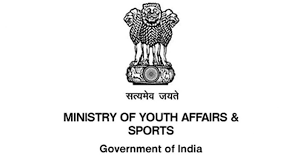
The Ministry of Youth Affairs & Sports, Government of India, invited nominations for the National Youth Award (NYA) 2024.
- National Youth Award is sponsored by the Ministry of Youth Affairs.
- It is for the Indian youth for their tremendous and outstanding work in social service.
- This award is to motivate young persons to achieve excellence in the field of national development or social service
- It aims to motivate young persons (aged between 15 – 29 years) to achieve excellence in the field of national development or social service;
- To encourage young people to develop a sense of responsibility to the community and thus to improve their own personal potential as good citizens; and To give recognition to the outstanding work done by voluntary organizations working with the youth for national development and/or social service.
- The National Youth Awards are conferred usually during the National Youth Festival.
- The award is given in two categories: Individual Category and Organisation Category
- The number of awards given each year would ordinarily not exceed 20 for individual category and five for organization category. It may, however, vary at the discretion of the sanctioning authority in deserving cases.
- Prize money: Award to individuals will comprise a medal, a certificate and award money of ₹1,00,000/-. Award to voluntary youth organizations will comprise a medal, a certificate and award money of ₹3,00,000/-.
- Eligibility for Award:
- Individuals/organisations who have shown identifiable excellent work for youth in different fields of development activities and social service such as health, research and innovation, culture, promotion of human rights, art and literature, tourism, traditional medicine, active citizenship, community service, sports and academic excellence, and smart learning are encouraged.
Shipki-La Pass : In News
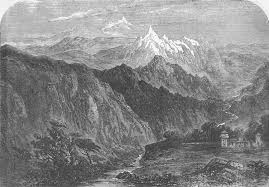
China has agreed in principle to the proposal of resuming trade through Shipki-La in Kinnaur district of Himachal Pradesh during the recent visit of its Foreign Minister Wang Yi to India.
- Shipki-La Pass is a motorable mountain pass situated at an altitude of 3,930 meters, bordering India and China in tribal district of Kinnaur in Himachal Pradesh.
- It also serves as the boundary post on the frontier between China and India.
- It is one of the highest motorable passes.
- Through this pass the Sutlej River (known as Langqen Zangbo in Tibet) enters India, and has long served as a vital trade corridor between India and Tibet.
- The old name of Shipki La was Pema La, or Shared Gate, also known as Shared Pass.
- It was declared the Line of Actual Control post-1962, and later, the Indo-Tibetan Border Police named it Shipki La.
- The opening of Shipki La to tourists is part of a broader strategy to stimulate economic growth in Kinnaur and Lahaul-Spiti, which share a 240-km border with China.
Vaquita:
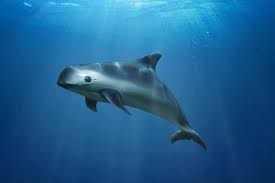
A report by the North American Environmental Commission has criticized Mexico for failing to protect the endangered vaquita porpoise, with only 10 remaining.
- Vaquita is a shy member and the smallest of the porpoise family.
- Vaquitas are the most endangered of the world’s marine mammals.
- It is the smallest range of any whale, dolphin, or porpoise.
- It lives in the northern part of the Gulf of California, an area that is rich in fish and shrimp.
- It is most commonly sighted in shallow waters up to 50 metres deep.
- Vaquitas are the smallest cetaceans—the group that includes dolphins, porpoises,
- Although they do visually resemble dolphins, their closest relatives, vaquitas, have chunkier bodies and rounded heads with no snouts.
- Their dorsal fins are unique in that they are taller and wider than most other porpoises.
- Known for their elusive nature, vaquitas tend to shy away from boats and human activity.
- Vaquitas communicate using echolocation (or sonar) by emitting high-frequency clicks.
- Conservation Status: Critically Endangered (IUCN)
- Threats: The decrease in the vaquita population is also related to the totoaba, a large fish that also only lives in the Gulf of California.
INS Udaygiri and INS Himgiri:

Indian Navy is set to commission the latest state of the art Project 17A multi-mission stealth frigates Udaygiri and Himgiri at Naval Base, Visakhapatnam, on 26 Aug 2025
- Udaygiri and Himgiri are built under the Project 17 (Shivalik) class frigates.
- Udaygiri, built by Mazagon Dock Shipbuilders Ltd. (MDL), Mumbai, and Himgiri, constructed by Garden Reach Shipbuilders & Engineers (GRSE), Kolkata, showcase the nation’s growing shipbuilding prowess, as well as, the synergy between India’s premier defence shipyards.
- Both frigates were designed in-house by the Indian Navy’s Warship Design Bureau (WDB).
- The ships feature modern Combined Diesel or Gas (CODOG) propulsion plants, state of the art Integrated Platform Management System and a suite of advanced weapons and sensors developed by Indian manufacturers.
- The ships, with about 75% indigenous content, supported by hundreds of indigenous MSMEs, align with the Government’s vision of Aatmanirbhar Bharat in defence manufacturing.
- Udaygiri also holds the distinction of being the fastest ship of her class to be delivered post-launch, a result of the modular construction methodology adopted by Indian shipyards.
- The commissioning of these two will augment the Navy’s combat readiness and reaffirm India’s resolve to achieve self-reliance in warship design and construction.
Parliamentary Committee Observations and Recommendations on the Fertilizer Sector:

A parliamentary committee has urged the government to reclassify the fertilizer sector as ‘strategic’, criticizing its current ‘non-strategic’ status as inconsistent with India’s self-reliance goals under Atmanirbhar Bharat, especially in light of growing import dependency and food security concerns.
Parliamentary Committee Observations and Recommendations on the Fertilizer Sector:
- Fertilizers are crucial for agricultural productivity and food sovereignty. The panel noted that India’s high import dependence (25% for urea, 90% for phosphates, and 100% for potash) makes strengthening fertilizer PSUs essential for domestic production, price stability, disaster resilience, and long-term food security.
- The Department of Investment and Public Asset Management (DIPAM) denied strategic status to the fertilizer sector despite the sector’s critical role in food security.
- Public Sector Undertakings (PSUs) contribute only ~25% of urea and ~11% of non-urea fertilizer production.
- The private sector dominates the industry, contributing over 57% of total production (2023–24).
- The panel noted that PSUs serve as price stabilizers, particularly for small and marginal farmers through government-subsidized distribution, underscoring the need to treat the fertilizer sector as strategic.
Recommendations :- Classify the sector as ‘strategic’ to attract sustained investment and ensure alignment with Atmanirbhar Bharat goals.
- Launch a dedicated mission to upgrade technology, diversify products, and adopt sustainable practices in public sector units.
- The committee noted that revived fertilizer PSUs have achieved a successful turnaround, with the reopening of closed units contributing 7.62 MT to annual urea production.
National Pharmaceutical Pricing Authority:

The Parliamentary Standing Committee has criticized the National Pharmaceutical Pricing Authority (NPPA) for allowing a 50% price increase on 11 essential drug formulations in 2024.
- In 2024, NPPA approved price hikes for drugs including those used for treating bacterial infections, asthma, and bipolar disorder in line with the Drugs Prices Control Order, 2013 guided by CAMPH (Committee on Affordable Medicines and Health Products), NITI Aayog.
- Key Observations & Recommendations of the Standing Committee on Drug Pricing:
- The Standing Committee on Chemicals and Fertilizers expressed serious concerns about the potential negative effects of the price hikes on public health, particularly in the context of affordability and access to essential medicines.
- Limited Justification: The committee noted that the NPPA’s justification of price hikes was based on the increased cost of production, active pharmaceutical ingredients (APIs), and exchange rates, but the impact on the affordability of medicines was not adequately considered.
- Regulatory Gaps in Cancer Drug Pricing: The Committee on Petitions (Rajya Sabha) observed that while the number of anti-cancer drugs under price control in NLEM 2022 increased from 40 to 63, a large number of oncology medicines remain outside the Drugs (Prices Control) Order, 2013.
- This lack of statutory price regulation has led to high and often unaffordable cancer drug prices, severely restricting patient access.
Nepal Enters the International Big Cat Alliance:
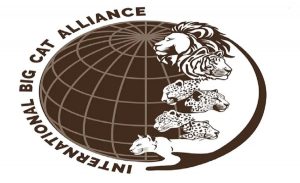
Nepal has officially joined the International Big Cat Alliance (IBCA).
- International Big Cat Alliance (IBCA) is an India-led global multi-country, multi-agency coalition of more than 90 big cat range and non-range countries dedicated to conserving 7 big cat species and their habitats.
- It was proposed by the Prime Minister of India in 2019, officially launched in April 2023 (Mysuru, Karnataka) on the 50th anniversary of Project Tiger.
- Founding Members (16): India, Armenia, Bangladesh, Bhutan, Cambodia, Egypt, Ethiopia, Ecuador, Kenya, Malaysia, Mongolia, Nepal, Nigeria, Peru, Suriname, & Uganda.
- Focus Species: Tiger, Lion, Leopard, Snow Leopard, Cheetah, Jaguar, Puma.
- India hosts 5 of the 7 (Puma and Jaguar are not found in India).
- Objective is to curb illegal wildlife trade, conserve natural habitats, mobilise financial and technical resources, mitigate climate change impacts on big cats.
- Modelled on the International Solar Alliance (ISA) and comprises an Assembly of Members as the main decision-making body, a Standing Committee for policy execution, and a Secretariat based in India (New Delhi).
Women’s Employment Rate in India:

The Labour Ministry reported that women’s employment rate in India nearly doubled from 22% in 2017-18 to 40.3% in 2023-24, while female unemployment fell from 5.6% to 3.2%.Women’s Workforce Participation Rate (WPR) as measured by PLFS, reflecting the share of women engaged in economic activities (self-employment, regular jobs, casual labour).
Trends (2017-24):
- WPR doubled from 22% → 40.3%.
- Rural women employment increase by 96%, Urban increase by 43%.
- Female self-employment grew from 51.9% → 67.4%.
- 1.56 crore women joined the formal workforce and 16+ crore registered on e-Shram.
- Women-led MSMEs doubled and 68% Mudra loans went to women.
- Gender budget increase by 429% in last decade.
- Nearly 50% startups have women directors.
Chalk9 gene responsible for rice chalkiness:
Scientists in China have discovered the Chalk9 gene responsible for rice chalkiness, a trait that makes grains brittle and opaque during milling, lowering yield and commercial value.Rice is the staple food for most Indians, cultivated on about 25% of the total cropped area, and India ranks as the second-largest producer globally after China & is also the largest exporter of rice globally. It is a kharif crop needing high temperature (>25°C), high humidity, 75–125 cm rainfall, and adequate sunlight; optimal 30°C day / 20°C night, tolerating up to 40°C briefly. Grows best in soils pH 5.5–6.5 with good water-holding capacity and drainage. Leading producers: West Bengal, Uttar Pradesh, Punjab.
Sir Bani Yas Island:
A 1,400-year-old Christian cross has been unearthed from the ancient monastery on Sir Bani Yas Island, Abu Dhabi. Similar artifacts found in Iraq and Kuwait, linked to the historic Church of the East, point to the legacy of cultural harmony in the Gulf region. Sir Bani Yas Island: It is the largest island off the coast of the Al Dhafra Region in Abu Dhabi. It was declared a nature reserve in 1971 and is now the Arabian Wildlife Park, hosting free-roaming animals, breeding programs. Sir Bani Yas Island was first mentioned in European records in 1590 by Italian merchant Gasparo Balbi for its pearls, a trade that remained significant until the early 20th century.
India’s Fossil Heritage:
India’s fossil heritage is under threat as rare specimens like the 47-million-year-old snake Vasuki indicus risk theft, vandalism, and illegal auctions abroad due to the absence of a national fossil protection law or repository. India preserves fossils from the Precambrian to Cenozoic eras, including earliest plant life, dinosaur nests and eggs, giant snakes like Vasuki indicus, and ancestors of whales (Indohyus). Due to its isolation after separating from Gondwanaland, India’s fossil beds reveal crucial evidence of dinosaur evolution, mammal emergence, and marine transitions after the India–Asia collision. Key Fossil Sites – Rich deposits lie in Kutch (Gujarat), Narmada Valley (Madhya Pradesh), Deccan basalts, and Himalayan foothills, yielding rare vertebrate and invertebrate fossils.
India–China Reform Deficit:
Both India and China are facing structural economic challenges often described as a “reform deficit.” India is struggling with low private investment and stagnant manufacturing, while China is dealing with over-investment, weak household consumption, and rising debt concerns.Ancient trade and cultural links via the Silk Route and spread of Buddhism. Panchsheel Agreement (1954) and the short-lived “Hindi–Chini Bhai Bhai” phase. Relations soured after the 1962 border war.
Supreme Court Directive on Social Media Conduct Guidelines:
The Supreme Court of India has directed the Union government to frame comprehensive guidelines to regulate conduct on social media, balancing freedom of speech with the right to dignity of individuals and communities.India has over 800 million internet users with rapidly growing social media penetration. Social media influencers, comedians, and podcasters often commercialise speech through monetised content.
Increasing incidents of hate speech, misinformation, and derogatory humour have triggered legal scrutiny.
Typhoon Kajiki:
Vietnam has begun mass evacuations, shut airports, and cancelled flights as Typhoon Kajiki approaches its central coast with winds up to 166 km/h.A powerful tropical cyclone forming in the West Pacific Ocean. Approaching central Vietnam, expected landfall between Thanh Hoa and Nghe An province.
Wind speeds up to 166 km/h. Brings heavy rains, floods, and landslides. Considered as powerful as Typhoon Yagi (2024), which killed ~300 people and caused $3.3 bn in damages.
First Veterinary Blood Transfusion Guidelines 2025:
The Government of India has released the country’s first comprehensive guidelines for veterinary blood transfusion services, addressing a major gap in emergency animal healthcare. iT IS A national framework providing scientific protocols for animal blood donation, storage, and transfusion, ensuring safety, biosafety, and animal welfare. UNDER : The Department of Animal Husbandry and Dairying (DAHD), Government of India.
Super Garuda Shield 2025:
Indonesia, along with the United States and allied nations, has launched the annual military exercise “Super Garuda Shield 2025”, aimed at enhancing regional security amid rising Indo-Pacific tensions.A large-scale multinational military exercise conducted annually since 2009. Focused on combat readiness, interoperability, and regional security cooperation. Launched by Jointly hosted by the Indonesian National Armed Forces and the U.S. Indo-Pacific Command.




